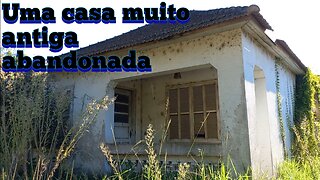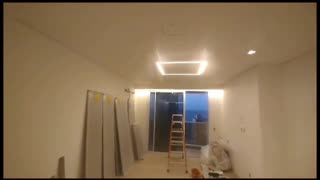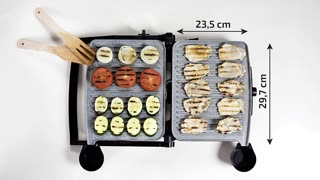CASA C-101 Aviojet - Spanish Air Force (SAF) - Ejército del Aire
- Subscribe this channel 👍
In the 1970s, the Spanish air force had a fleet of obsolete instruction and training aircraft, consisting mainly of Hispano A-200 and A-220 and Lockheed T-32A aircraft manufactured in the United States. The need to renew it led the official authorities to contact the company Construcciones Aeronáuticas, SA (CASA) whose origins date back to 1923 and who have extensive experience in the field of aeronautical design and construction. Starting from the idea of building a machine as economically as possible, the firm's study office studied the feasibility of this project from the summer of 1974. On 10 January 1975, the council of ministers approved the conclusions of the Ministry of Air, which aimed make, based on an estimate for 1980-1990, a basic and advanced instruction and training apparatus that was both economical and easy to maintain, maneuverable at all altitudes, with low specific consumption and with great flexibility.
On September 16 of that year, a contract was signed regarding the design and construction of functional models to be studied in wind tunnels, the manufacture of two cells for static and resistance tests and the production of four prototypes for FLIGHT trials. CASA chose the German company Messerschmitt-Bölkow-Blohm, which was responsible for the structure of the rear of the fuselage, and the North American firm Northrop, which was responsible for the design of the reactor and wing air intakes. At the same time, the Spanish company, when considering a solution for the propulsion of the device, became interested in several engines: two models of double flow reactors (Larzac 04 and Garret TFE-731) and two standardized ones (GE 185-4A and Rolls- Royce Viper 540). The latter were discarded because of their high price and consumption. CASA eventually decided on the TFE-731, as the SNECMA Larzac 04 had a lower boost and twice the consumption. The estimated development times were brief, given the good business environment. Tests in the wind tunnel. carried out in Spain, France and Great Britain, as well as the static tests and those related to the operation of the equipment were satisfactory. And so much so that, on May 28, 1977. the prototype P.1 (XE-25-01) was presented to the public at the Getafe factory. A month later, the plane made its maiden flight, with Lieutenant Colonel Gabriel de la Cruz at the controls.
On March 17, 1980, the C-101 entered service with the Spanish air force as soon as the first four series were delivered to Squadron 793 at the Air School of San Javier (Murcia). On October 23, 1981, it was the turn of Grupo 41, installed at the base of Zaragoza. From then on, the plane was used in basic education, in the second of the three cycles that comprise the training of Spanish military pilots. Its role has not been reduced to this function. The Aviojet, in fact, also served for elementary and advanced piloting in the scope of subsonic flights. Its cockpit, equipped with two ejection seats Martin Baker Mk.10L zero-zero, offered an excellent visual field. It also had a good autonomy, of about 7 hours, only with its internal fuel, without resorting to supplementary deposits. In addition, it can be equipped with a wide variety of equipment, such as photographic devices, electronic countermeasure devices, a laser illuminator or 30 mm cannons in nacelles.
In total, 143 units of the C-101 left the assembly lines. In addition to the Spanish version C-IOIEB, an export model was created, the C-101BB, with a slightly more powerful reactor and greater load capacity. The Chilean air force has purchased a dozen such aircraft, which serve there under the designation T-36 Falcón, and another four have been supplied to Honduras. The specialized light attack variety C-101CC appeared in November 1983, at the suggestion of the Chilean Air Force, which received 23 units, all - except the first - assembled under license in Chile by ENAER. The C-101CC has a wider range of action and a more powerful reactor, in addition to some modifications such as the integration of a new shooting and navigation guidance system, a digital front screen and the ability to transport air / air missiles Shafrir 2 Jordan purchased 16 copies, which are used by its air force training center at King Hussein base. Finally, in 1985, the C-IOIDD variant was performed, with an improved avionics, with a view to participating in a contest of basic instruction and training planes organized by the United States air force. The device, however, was not selected.
- Blogger:
https://littledragonblue-modelismo.blogspot.com
- Instagram:
https://www.instagram.com/modelismo.militar
Thank you for your support 👍
copyright©:
Music: Slynk - Doctor Momentum
-
 6:51
6:51
Estou Empreendedor Digital
8 months agoSAIR DO ALUGUEL? Descubra como você pode ter a INDEPENDÊNCIA Financeira
67 -
 10:36
10:36
Estou Empreendedor Digital
8 months agoSAIR DO ALUGUEL? Descubra como você pode ter a INDEPENDÊNCIA Financeira
1.1K -
 8:49
8:49
Giovani P Duarte
1 year agocasa antiga abandonada
29 -
 3:35
3:35
Obra
9 months agoApartamento moderno brasileiro
97 -
 0:08
0:08
DaiRidere
1 year agoAlla porta
3 -
 1:03
1:03
LadyWolfZannaBianca91
1 year agobistecchiera\piastra elettrica
2 -
 0:20
0:20
LadyWolfZannaBianca91
1 year agoDash Pods Detersivo Lavatrice In Capsule 70 Lavaggi
3 -
 0:15
0:15
LadyWolfZannaBianca91
1 year agoecotec Griglia elettrica
1 -
 4:29
4:29
Alberto Silva
9 months agoUrgente - Casa caiu para Militares do Exército Brasileiro
2.07K -
 0:46
0:46
LadyWolfZannaBianca91
1 year agoRussell Hobbs Spremiagrumi Elettrico
6